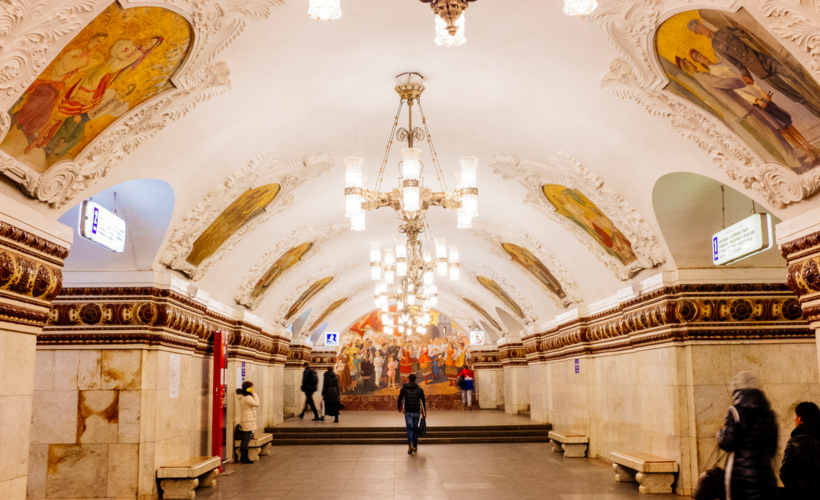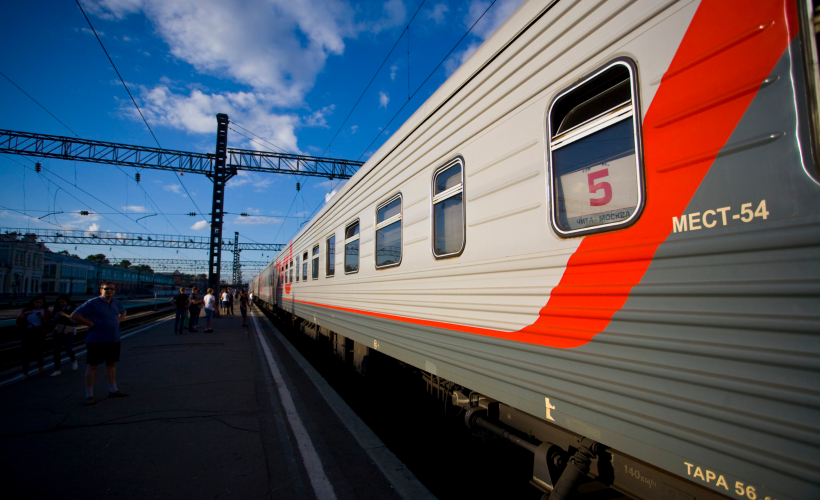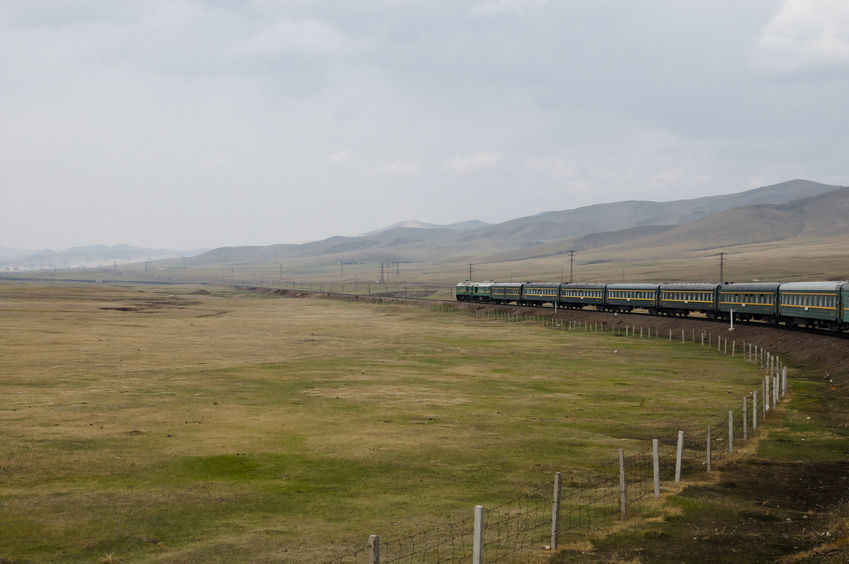
The Trans-Siberian Railway is the longest uninterrupted railway route in the world at a length of 9,289 kilometres. Running from Moscow to Vladivostok (and vice versa), it crosses six time zones, 90 cities, and two continents, and all in the span of six to seven days.
A little bit of history

The railroad was constructed in the late 19th century as a solution to the high cost of transport over Russia’s vast expanse. It’s since become a source of national pride. For its construction, Russian Tsars decided not to make use of foreign investment, but instead use funds from Russia’s treasury to build the railway. It was decided that the railway would be built by Russian people, using Russian materials.
Construction commenced simultaneously at Chelyabinsk and Vladivostok in 1891.
Specialists from central cities joined exiled prisoners and soldiers in building the railway, making tunnels and constructing bridges. It took just 12 years to build 7,500 kilometres of train tracks!
After the Russo-Japanese war (1905-1906), the wooden tracks were replaced with metal, and the line extended from Vladivostok through all of Russia, with construction finally culminating in 1916. WWII and a civil war saw destruction of parts of the line and bridges, and the reconstruction of these parts were finished by 1925. There have been no breakdowns till the present.
The main route

Make the most of your trip by beginning your journey on the Trans-Siberian Railway in Moscow, the largest city in Europe, to Vladimir, 209 kilometres away. Vladimir was founded in 995 AD and is home to four cathedrals that are on the UNESCO World Heritage list.
Then, 252 kilometres from Vladimir is Nizhny Novgorod, founded in 1221. Nizhny Novgorod only recently became open to visitors and have memorials dating back to the 13th and 14th centuries.
The agricultural centre of Kirov is the next stop, 456 kilometres further. After that, the centre of Russia’s military manufacturing, Perm, lies an additional 480 kilometres down the line.
Travelling 381 kilometres further, the Trans-Siberian Railway leads through Ekaterinburg (Sverdlovsk), an area rich in minerals and raw materials. From here, it’s another 326 kilometres to Tyumen – the first Russian town in Siberia.
Omsk lies 572 kilometres from Ekaterinburg, where the Irtysh and Om rivers meet. The city is the largest industrial and cultural centre in Siberia. Siberia’s largest city, Novosibirsk, is surrounded by the Altai Mountains, and you’ll reach it a further 627 kilometres along.

The railway then winds on for a whopping 762 kilometres through spectacular nature scenes to Krasnoyarsk, a city along Yenisei River, and onwards to Angarsk 1,048 kilometres away.
After these long stretches, it’s just a 40-kilometre ride to the university town of Irkutsk. Many tourists travel to Lake Baikal from here. Baykalsk is the next stop, 207 kilometres from Irkutsk. This town is a great pit stop for skiing and snowboarding.
Ride along for another 249 kilometres and you’ll arrive in Ulan-Ude, the capital of Buryatia. This autonomous republic in eastern Siberia was part of the Mongolian Empire between the 13th and 17th centuries. This is also where the railway splits, either going on through Mongolia and Ulaanbaatar to Beijing (the Trans-Mongolia) or heading east through Chita to Vladivostok (the Trans-Siberian).
On the Trans-Siberian route, the railway splits again 557 kilometres away in Chita. Here, the Trans-Siberian continues east to Vladivostok while the Trans-Manchurian travels South through Manchuria to China.
In Birobidzhan, 2,154 kilometres from Chita, the railway crosses the Amur River by using the longest Trans-Siberian bridge – a staggering 2,612 metres long! The quiet town of Khabarovsk follows all the excitement 173 kilometres later, with Vladivostok a mere 766 kilometres away. The final stop along the main routes, Vladivostok started as a military base and is the main Russian port on the Pacific Ocean today.
Other rail routes

- The Trans-Mongolian line runs 7,867 kilometres from Moscow to Beijing via Mongolia.
- The Trans-Manchurian line runs 8,986 kilometres long from Moscow to Beijing, entering China near Zabaykalsk.
- The Baikal-Amur Mainline (BAM) is not a part of the Trans-Siberian Railway. It’s a track that runs parallel to, and nearly 4,000 kilometres north of, the Trans-Siberian Railway. This line is not as widely advertised as travellers will have to make use of multiple and different trains to travel from one side to the other, with the odd bus ride or two thrown in for good measure.
There are a number of options available if you want to travel along the Trans-Siberian Railway. From trains that only offer 2nd and 3rd class carriages (rumoured to be the only train to travel the longest distance) to ultra luxurious experiences. Which one will you choose?



